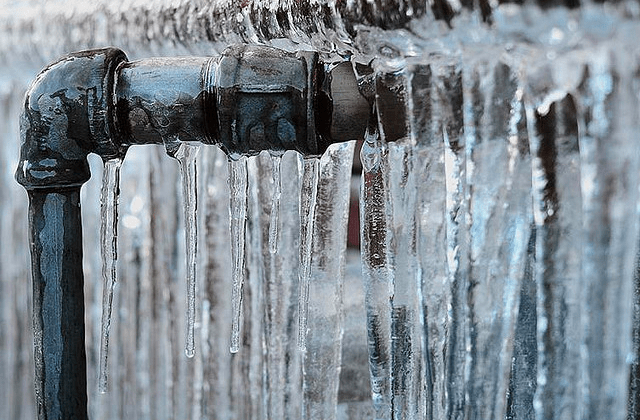We've unearthed this article on Prevent Frozen Pipes down the page on the internet and felt it made perfect sense to relate it with you in this article.

Cold weather can ruin your plumbing, especially by freezing pipelines. Here's how to stop it from taking place and what to do if it does.
Intro
As temperature levels drop, the risk of frozen pipelines rises, potentially causing costly repair work and water damages. Recognizing just how to prevent frozen pipes is essential for home owners in chilly environments.
Recognizing Frozen Pipes
What triggers pipelines to freeze?
Pipelines freeze when revealed to temperatures listed below 32 ° F (0 ° C) for prolonged durations. As water inside the pipes freezes, it expands, putting pressure on the pipe wall surfaces and potentially triggering them to break.
Threats and damages
Frozen pipes can result in water system disturbances, property damages, and costly repair services. Ruptured pipes can flooding homes and cause considerable structural damages.
Signs of Frozen Water Lines
Recognizing frozen pipelines early can stop them from breaking.
Exactly how to identify icy pipes
Try to find decreased water circulation from taps, unusual smells or sounds from pipes, and visible frost on subjected pipelines.
Avoidance Tips
Shielding susceptible pipelines
Cover pipes in insulation sleeves or make use of warmth tape to shield them from freezing temperature levels. Focus on pipelines in unheated or exterior areas of the home.
Heating strategies
Keep indoor areas sufficiently heated up, particularly locations with plumbing. Open closet doors to permit cozy air to circulate around pipes under sinks.
Safeguarding Outside Pipes
Yard pipes and outside faucets
Disconnect and drain yard hoses before winter months. Install frost-proof spigots or cover outside faucets with shielded caps.
What to Do If Your Pipes Freeze
Immediate activities to take
If you think icy pipes, maintain taps open up to ease stress as the ice thaws. Utilize a hairdryer or towels soaked in hot water to thaw pipelines slowly.
Long-Term Solutions
Architectural adjustments
Take into consideration rerouting pipelines far from outside wall surfaces or unheated areas. Include added insulation to attics, basements, and crawl spaces.
Upgrading insulation
Purchase high-quality insulation for pipes, attics, and wall surfaces. Correct insulation aids maintain constant temperatures and decreases the threat of frozen pipes.
Final thought
Preventing icy pipelines calls for positive actions and fast feedbacks. By comprehending the reasons, signs, and preventive measures, house owners can safeguard their plumbing throughout cold weather.
6 Proven Ways to Prevent Frozen Pipes and Protect Your Home
Disconnect and Drain Garden Hoses
Before winter arrives, start by disconnecting your garden hoses and draining any remaining water. Close the shut-off valves that supply outdoor hose bibs and leave the outdoor faucet open to allow any residual water to drain. For extra protection, consider using faucet covers throughout the colder months. It’s also important to drain water from any sprinkler supply lines following the manufacturer’s directions.
Insulate Exposed Pipes
Insulating your pipes is an effective way to prevent freezing. Pipe insulation is readily available at home improvement stores and is relatively inexpensive. Pay close attention to pipes in unheated areas such as the attic, basement, crawl spaces, or garage. Apply foam insulation generously to create a buffer against the cold. You can also wrap your pipes in heat tape or thermostat-controlled heat cables for added warmth.
Seal Air Leaks
Inspect your home for any cracks or openings that could let in cold air. Seal any holes around the piping in interior or exterior walls, as well as the sill plates where your home rests on its foundation. Additionally, make sure to keep your garage door closed unless you’re entering or exiting. Leaving it open creates a significant air leak that can lead to frozen pipes.
Allow Warm Air Circulation
During cold snaps, it’s essential to allow warm air to circulate evenly throughout your home. Leave interior doors ajar to promote better airflow. Open kitchen and bathroom cabinets to help distribute heat consistently around the rooms. If you have small children or pets, be sure to remove any household chemicals or potentially harmful cleaners from open cabinets for safety.
Let Faucets Drip
A small trickle of water can make a big difference in preventing ice formation inside your pipes. When temperatures drop significantly, start a drip of water from all faucets served by exposed pipes. This continuous flow helps prevent the water from freezing. Additionally, running a few faucets slightly can relieve pressure inside the pipes, reducing the chances of a rupture if the water inside does freeze.
https://choateshvac.com/6-proven-ways-to-prevent-frozen-pipes-and-protect-your-home/

I was guided to that editorial about How to Prevent Your Pipes From Freezing from a friend on another domain. Do you know about somebody else who is enthusiastic about the niche? Be sure share it. We thank you for reading our article about How to Prevent Your Pipes From Freezing.
Apply Now